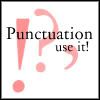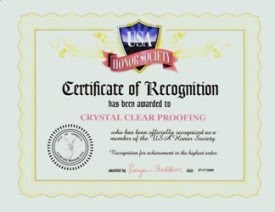
Who knew there was so much to learn about punctuation marks? To make it as easy as possible, review the following fifteen rules from time to time and you'll be a punctuation pro:
1. A period shows where sentences end, separates the initials of some acronyms, and ends many abbreviations.
2. Don't double-space after a period at the end of a sentence; the word processing program will adjust the space for you.
3. Commas, signaling natural pauses and adding clarity to what you're writing, should be used before conjunctions and before the final or or and in a series.
4. Semicolons (weak periods) separate two thoughts of equal rank; these are thoughts that could be turned into independent sentences.
5. Colons are used to do the following: introduce lists, separate thoughts (when one further explains the other), distinguish hour and minutes, cite chapter and verse, separate title and subtitle, and end formal salutations.
6. Ellipses indicate that words or sentences have been omitted, or a thought has trailed off . . .
7. Apostrophes show possession, not plurals (except for its [possession] and it's [it is]), as well as indicating missing letters when a verb has been contracted.
8. Quotation marks indicate that someone is speaking or that material has been taken from another source.
9. In American English, commas and periods are usually inside the quotation marks; colons and semicolons are outside; and dashes, question marks, and exclamation points are inside or outside depending on usage.
10. Exclamation points follow interjections, and you should use them sparingly. Please!
11. Question marks show that an answer is requested or that the writer is unsure of a specific fact.
12. Hyphens connect words with prefixes, suffixes, or other words.
13. Dashes, which are about the length of the letter m, signify a dramatic break in thought, while shorter dashes, known as en dashes, which are the length of the letter n, are used between a range of dates, times, or numbers.
14. Parentheses enclose figures in a numbered list within a sentence or set off explanatory material (facts that add substance).
15. Brackets indicate editorial comments, corrections, or clarifications – or further set off text within a parenthetical phrase.

Source: The Gremlins of Grammar

































































I think I stick everything inside of quotation marks...
ReplyDeleteGreat summary. I'm doing a dialogue workshop in March, and proper punctuation is part of it.
ReplyDeleteLove this post!! I needed this one. I think I might have to frame it and stick it beside my desk as a reminder when I'm writing! You rock!!
ReplyDeleteGreat tips! I'm tweeting...
ReplyDeleteElizabeth
Mystery Writing is Murder
great advice! if i remember to post this tonight, i am posting this up on myspace for role players.
ReplyDeleteYour post are always so helpful.
ReplyDeleteDashes and en dashes still confuse me...
ReplyDeleteCrystal this is excellent. I've got it stored in my Crystal Clear file folder.
ReplyDeleteMarvin D Wilson
Thanks for these tips, Crystal! Very useful! I think I should post them above my desk! Why do I always feel the need to use excessive exclamation points whenever I leave blog comments?!
ReplyDeleteAnother very useful post, Crystal. My problem is with the double spacing after a period, I think old habits die hard.
ReplyDeleteGreat tips as always :) Thanks for sharing
ReplyDelete#3--I thought the current thinking was to drop the final comma, no? Also, I have a grammar post idea/question. Should I email it to you?
ReplyDeleteMichele
SouthernCityMysteries
Glad everyone enjoyed the punctuation facts!
ReplyDeleteMichele: Many newspapers and some other publications do not employ what is referred to as the serial comma (the comma after a final or or and). However, in more formal writing, such as essays, business letters, and literary works, the serial comma is retained. It's recommended to aid in clarity, emphasis, meaning – and to avoid confusion.
Regarding your question: Of course! You can email me anytime. :)
You always make this painless. Thanks Crystal.
ReplyDeleteGreat tutorial. Thanks.
ReplyDeleteThanks for clarifying, Crystal. With my journalism background, no wonder I was confused!
ReplyDeleteMichele
SouthernCityMysteries
Don’t forget that the two separate thoughts in use for a semi colon needs to be related not just random sentences *which I have seen).
ReplyDeleteRegarding the spaces after a period, are you saying the programs automatically adds two spaces?
Southpaw: The programs don't add two spaces; with the advent of word processors and then computers, the letters are spaced more proportionately, thus eliminating the need for two spaces after a period.
ReplyDeleteThis used to be necessary to identify the beginning of a new sentence, since the characters were not uniform.
As for the semicolon, yes the thoughts need to be related – thus it's stated that they must be of equal rank.